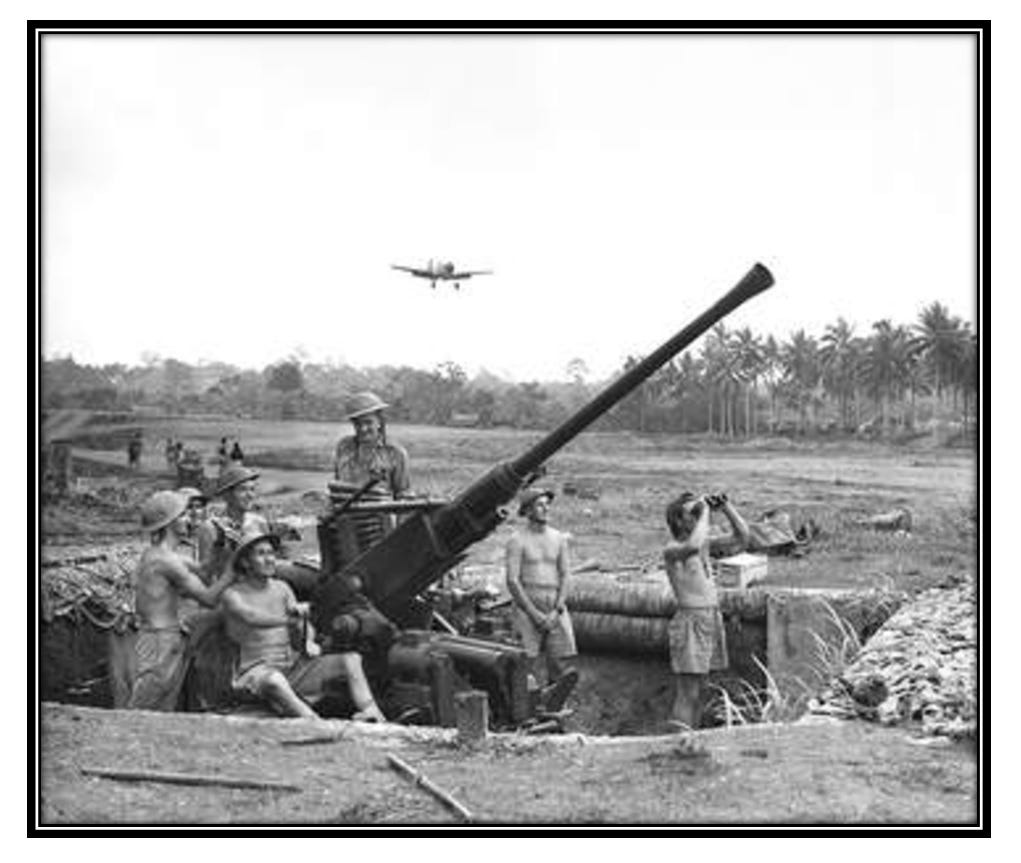TDIH: Battle of Milne Bay
A joint force of Australians and Americans had worked hard for this moment, which came just as the Japanese were trying to establish a hold on Papua New Guinea.
On this day in 1942, Allied forces win the Battle of Milne Bay—the very first Allied victory against Japanese land forces! Needless to say, the victory proved to be a tremendous morale booster.
A joint force of Australians and Americans had worked hard for this moment, which came just as the Japanese were trying to establish a hold on Papua New Guinea. Specifically, the Japanese hoped to capture the capital, Port Moresby.
Clearly, Allied leaders couldn’t let that happen.
Thus it was that a group of Australians and Americans found themselves working together to build an Allied base at Milne Bay, in southeastern Papua New Guinea. The base would not only help defend nearby Port Moresby, but it would also provide a staging area for bombers: Milne Bay ensured that aircraft would be able to strike Japanese bases without first having to complete a difficult flight over New Guinea’s mountain ranges.
The construction project was anything but easy. It rained constantly, and mosquitoes were everywhere. The soldiers, pilots, and engineers found themselves overcome by malaria and dysentery. “[I]t sounds a bit squalid,” one Australian officer would later report, “but I know I’d be sitting up at 20,000 feet in a Kittyhawk on patrol of some sort with diarrhea, you’d just be . . . you’d feel it all going down the back of your legs and there’s nothing you could do about it for the next hour. You just had to sit in it. So it was pretty unpleasant.”
Ya’ think?!
They kept going, of course. By the end of August 1942, one airstrip was complete and two more were under construction. But by then, the Japanese had finally gotten wind of what was going on in southern Papua New Guinea.
They wanted that airbase! The Allies might have hoped to DEFEND Port Moresby with it, but the Japanese wanted to TAKE Port Morseby with it.
Unsurprisingly, then, the Japanese began planning an attack for the end of August.
Except they made a critical mistake early on. The base at Milne Bay was new, and the Japanese assumed it wouldn’t be well defended. They were wrong. In reality, the base had already been reinforced. Allied codebreakers had been intercepting information about Japanese plans, and they knew an attack was coming. The base was now defended by about 9,000 Australians and Americans.
The Japanese were seemingly oblivious to all of this. Instead, they attacked during the night of August 25-26.
Allied forces outnumbered the Japanese, but the Japanese enjoyed many tactical advantages, such as control of the sea. The battle dragged on for days, with a final effort coming during the night of August 30-31. The Japanese had decided to make one last push for control of the No. 3 airstrip.
“When the Japanese made their move against the airstrip, such intense fire hit them that not one man was able to cross the strip alive,” a historian for the Center of Military History explains. “The heaviest attack came before dawn. Like the others, it was repulsed with heavy loss to the enemy, who withdrew at first light, leaving 160 dead behind.”
After that, the writing was on the wall. Japanese reinforcements weren’t available until September 12, and the forces already in the area simply couldn’t last that long. Instead, they began to withdraw, finally leaving on September 7.
World War II would still drag on, of course. But the victory at Milne Bay was one early step, eventually leading to the Japanese surrender in September 1945.
P.S. Yes, this is an American history page, and some of you WWII history buffs know that there were (a lot) more Australians than Americans at this battle.... Also, there were Americans at this battle. Fourteen of them made the ultimate sacrifice. I'd hate to forget their contribution to the war just because there were an awful lot of Australians there, too. I hope you enjoy today's story.
Sources can always be found on my website, here.





Great history, Tara. The Australian involvement in the South Pacific was major, especially considering the sacrifices they'd already made in the Western Desert Campaign. Lately, revisionist history seems to focus more on the internal political struggles the Aussie's underwent at home versus their very real heroism in multiple fronts during the War. Those who are unfamiliar with that are referred to the Battle of Rabaul and the fate of Lark Force there.
It takes a team to win. This story speaks to the teamwork of Australian and Americans coming together against a foe. Well done my brothers.